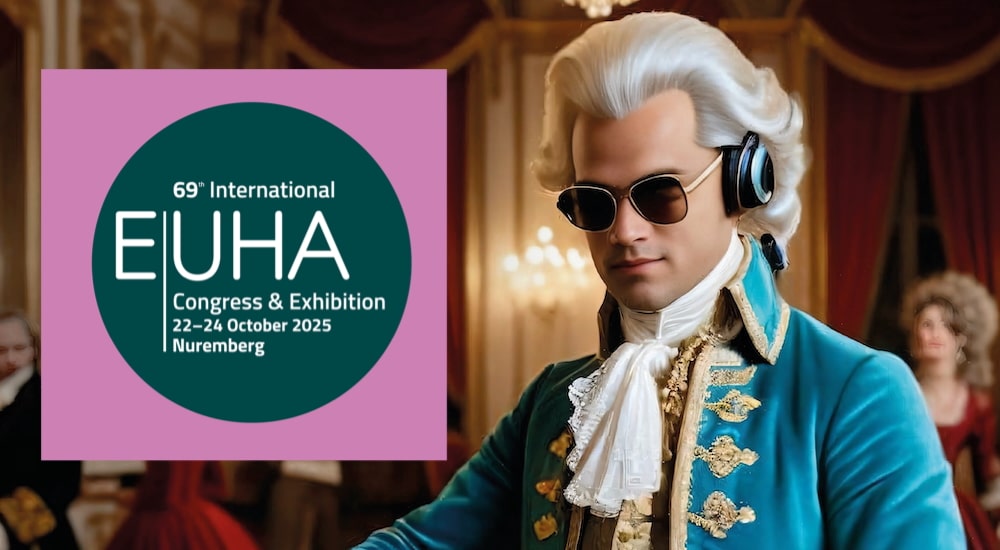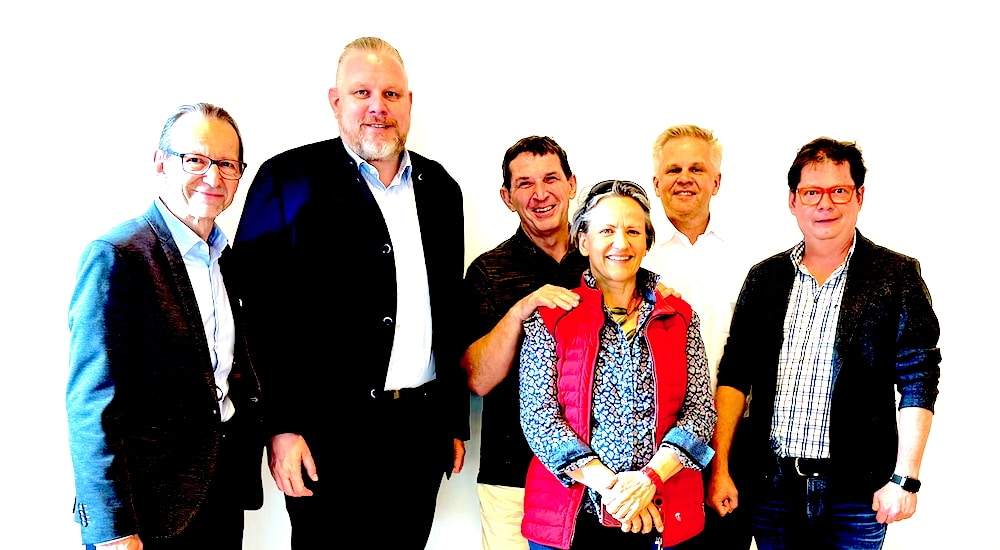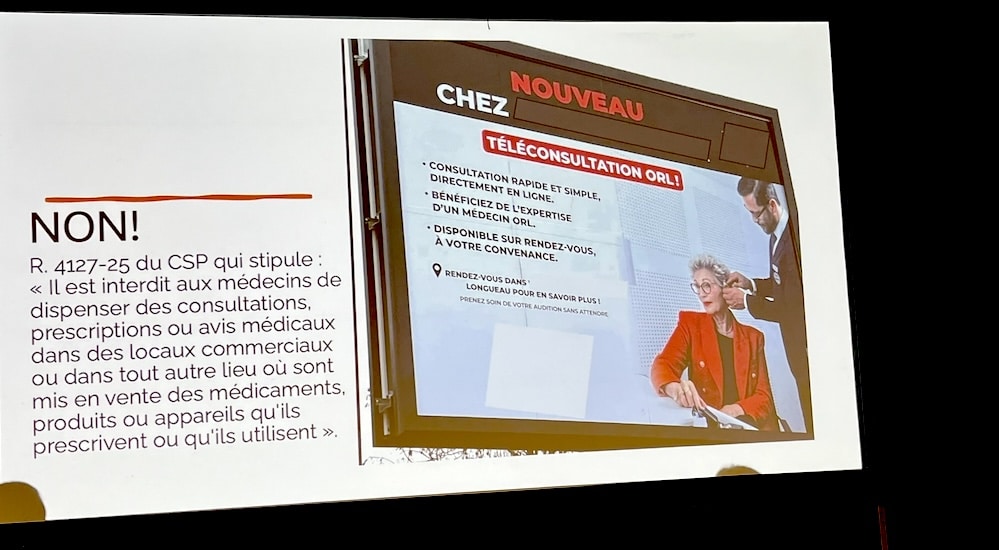LONG READ: Soft audiology skills must match potent tech in POWER and SUPER-POWER hearing aids
hearing aids
Hearing aid manufacturers tell Audiology Worldnews about their solutions for severe and profound loss. While these go by the name of power or super power hearing aids, applying them to any case tests the knowledge and soft skills of audiologists, who must work hard to maximise benefits from the available technology.

“With great power comes great responsibility” goes a proverb popularised by a certain comic book. And it is an apt adage for the work of hearing care professionals in treating patients who fall into the severe or profound hearing loss ranges. A tangled web of considerations awaits all audiologists who hope to apply the amazing technology offered by the market’s power and super power hearing aids. The world’s major manufacturers all have their particular solutions, fitting guides, and plenty of advice for hearing care professionals. Read on:
PHONAK
It is clear from talking to any of the leading experts at these major producers that tech and fine fitting alone will not see the job well done. Audiologists must ask and answer the right questions, test with great care, and select and fit the right device. It does not stop there.
Bernadette Fulton, Audiology Manager for severe to profound hearing loss at Phonak’s international HQ in Switzerland, is under no illusions about the difficulty of working with power and super power solutions:
“If only it were so easy!” she declares. “For very good reasons, clients with severe and profound hearing loss do not fit into the established patterns of care that are successful for mild to moderate hearing loss. Simply adding gain is not a solution to the complex communication problems they encounter. Those with severe and profound hearing loss are often highly dependent upon their hearing technology. The variability in their auditory abilities can be huge and difficult to predict from the audiogram,” adds this clinical audiologist.
“The result is that even the best hearing aid technology might not fully meet their expectations,” Fulton underlines.

Phonak Naída Paradise and Roger
“Individuals with severe and profound hearing loss require a comprehensive treatment plan which includes a range of management options such as counselling and training as well as a full hearing solution, not just a hearing aid,” explains the expert, proposing for this objective the combination of Naída Paradise and Roger Technology.
At the heart of the issue is finding the right protocols to follow for power hearing devices. As the Phonak audiology expert points out, established international evidence-based management techniques for milder hearing loss are published in multiple guidelines. “However, rarely, if ever, is severe and profound hearing loss referred to specifically in any of these publications.”
153 evidence-based recommendations to follow
“This lack of best practice protocols motivated the academics, researchers and clinical audiologists, who wrote and reviewed the new guidelines. Hailing from four countries including the UK, we produced and recently published Guidelines for Best Practice in the Audiological Management of Adults with Severe and Profound Hearing Loss (Turton et al 2020). Here at last, audiologists will find 153 evidence-based recommendations to follow, when planning a best-practice hearing solution for severe and profound hearing loss,” asserts Fulton.

Compared to solutions for those with mild to moderate loss, how challenging is the task involved with severe and profound cases? Phonak’s Audiology Manager quotes US authority Professor Pamela Souza’s thoughts on the question:
“In many ways, patients with severe hearing loss are the most interesting we see, calling upon our skills as clinicians to develop assistive strategies, provide counseling, and think more creatively than the “typical” hearing aid fitting. As clinicians, we understand that the end result of a hearing aid fitting is limited by the processing capability of the peripheral and central auditory system, and that few patients with severe sensorineural hearing loss will achieve high levels of speech recognition in complex listening situations”. (Souza 2009)
And Fulton adds: “That means that our clients with severe to profound hearing loss need us to activate all our skills and knowledge as audiologists, over and above an excellent hearing aid fitting. For me, the rewards as an audiologist outshine even the amount of impact we can make upon the client’s life and exceed those we enjoy working in other parts of hearing loss spectrum for adults.”
Phonak Naída Paradise and Roger On
Phonak’s latest generation of power hearing aids, Naída Paradise, promises “next level, powerful sound, universal connectivity and personalised digital solutions” through new hardware: its PRISM chip, a powerful double-receiver delivering a maximum power output of 141 dB in Naída P-UP and 130 dB in the Naída P-PR, and the brand’s Motion Sensor Hearing and Tap Control. New Software includes Adaptive Phonak Digital 2.0, which brings a gain-processing algorithm with adaptive compression, and customisation potential, plus AutoSense OSTM 4.0, encompassing Speech Enhancer, Dynamic Noise Cancellation with a directional beamformer to improve signal-to-noise ratio in challenging situations. A major feature of Naída Paradise is its universal connectivity, while the myPhonak 5.0 app brings a host of personalisation tools. Naída P-PR aids are rechargeable. The Naída housing colour spectrum is sleek: sand beige, beige, chestnut, champagne, silver grey, graphite grey, velvet black.

WIDEX
From WS Audiology, the current WIDEX solution in this category is WIDEX MOMENT BTE 13 D, a power hearing aid with 2.4GHz connectivity. It has a wide fitting range, suitable for mild to severe hearing losses – meeting the demands of those wearers who need the power of a BTE but still want connectivity and additional features.
Big Data
The brand underlines that the challenge of fitting WIDEX MOMENT BTE 13 D is eased thanks to the precision brought by TruAcoustics algorithm, which uses big-data insights from over 8000 real-life fittings, bringing a more personalised sound. This uses Widex PureSound with ZeroDelay technology and advanced Artificial Intelligence. “The WIDEX MOMENT BTE 13 D is,” says Widex, its “most natural sounding connective BTE solution to date”. The brand-new chip with greater connectivity means that those living with a more severe hearing loss “don’t have to miss out on all the incredible streaming opportunities you expect from a modern hearing aid,” the manufacturer underlines.


WIDEX MOMENT BTE 13 D can stream audio directly from iOS devices and can connect wirelessly to the brand’s own TV-Play accessory. It is also compatible with the WIDEX MOMENT app. But it is set up too for future connections for ASHA-ready (Audio Streaming for Hearing Aid) Android devices. Configurations include, of course, classic hook or thin tubes. Other features are:
- New BT Chip
- New thin tubes (Easywear V. 2)
- Optimised directional microphones
- Programming via Compass GPS 4.2
- NoahLINK wireless compatible
- Personalisation through SoundSense Learn AI
- 4 performance levels: 440/330/220/110
- Preference control, program button and telecoil are standard
- Battery size 13
- Battery life 215 hours
- Max gain 74 dB
- Max output 140 dB SPL
- Protection class IP68
- 13 colours
- TONELINK App
OTICON
For Oticon’s Principal Researcher, Elaine Hoi Ning Ng, the patient spectrum for power hearing aids is broad. Apart from those users born with or who acquire severe to profound hearing loss—who are already existing power users by adulthood—others are existing non-power hearing aid users who need amplification beyond the fitting range that has covered their loss up to that point; their hearing loss gradually degrading because of ageing. “A power hearing aid is often used in bimodal fitting, where the user is a unilateral cochlear implant user,” this expert points out.

Children
This category also has a use for younger patients, explains Elaine Hoi Ning Ng: “For children, including babies, tested with severe/profound hearing loss, they are fitted with power hearing aids while they are further assessed for cochlear implant candidacy, or to see if they would benefit from HA amplification.”
Needs vary greatly
The expert from this Denmark-based manufacturer emphasises the “very diffferent” needs of users of the power class, “and the difference in their needs are not entirely reflected in their audiogram,” she adds. “Oticon has a deep understanding of the variants of hearing loss, and we tailor the technology in our power hearing aids specifically to each individual’s requirements. There are different features in Oticon power hearing aids, such as OpenSound Navigator, OpenSound Optimizer, and Speech Guard, which ensure good access to sounds that are easy for the brain to make sense of. This is our BrainHearing philosophy, and the benefits of our technologies are backed up by solid scientific evidence.”
![]()
Oticon’s approach to fitting
“As for all hearing aid fittings, we recommend following the general recommendations, choose the fitting rationale that is made for severe/profound hearing loss, and best practice to verify and validate the hearing aid outcome, including real ear measurement, and also follow the personalisation steps in the fitting software. Depending on the previous experience of the power users, either long-term non-power hearing aid users first using power hearing aids or an experienced power user getting a pair of new power hearing aids, many users prefer to have their new hearing aids sound just like their existing hearing aids. So, there are many tips and tricks when it comes to fine-tuning the power hearing aids in the follow-up fitting appointments,” says Elaine Hoi Ning Ng.
“Also, it is important that the technology gives good access to speech, especially in noise. This is one of the major challenges in prescribing amplification for hearing aid users with severe/profound hearing loss. In addition, it is also important that the technology preserves the resolutions and clarity of the speech sounds,” he continues.
Added challenges, and the “highest gain” of Oticon Xceed
“One of the challenges in manufacturing power hearing aids, is that producing high sound pressure levels in a hearing aid causes mechanical vibration and produces distortion. However, having a high maximum power output (MPO) and full-on gain is always crucial in a power hearing aid because every dB counts for the severe/profound users. Therefore, hardware design also plays a crucial role in delivering a quality power hearing aid for users, in addition to the design of the audiology technology,” says the Oticon Principal Researcher.
![]()
The Oticon Xceed power hearing aid delivers 146 dB SPL MPO and 87 dB full-on gain which, says its producer is the highest gain and output in the industry. This “most powerful hearing aid in the world” uses the super fast Velox S platform and boasts the following features:
- 360° access to speech with no directionality limitations;
- optimal gain with a fitting of 6 dB more stable gain;
- consistent access to speech by preventing feedback and dramatically reducing the many daily gain reductions throughout the day;
- significant reductions of disturbing noise by applying fast and effective noise reduction that cleans noise even between words and can improve the signal-to-noise ratio with up to 11 dB, giving a clearer access to the speech signal;
- 2.4 GHz Bluetooth low energy for high-quality streaming of sound to both ears from devices such as TVs, FM systems, and modern smartphones
Also using the Velox S platform, Oticon Xceed Play brings new super and ultra power paediatric hearing aids for children with severe-to-profound hearing loss. Benefits include open sound and 360° access to clear speech through the two Oticon BrainHearing features, OpenSound Navigator and OpenSound Optimizer. And Oticon Xceed Play is child play ready; IP68 certified for protection against water, dust, and debris.
PHILIPS
Only recently back on the hearing health scene, thanks to a licensing deal signed in 2018 with Demant, parent company of Oticon, Philips offers severe-to-profound hearing loss sufferers super and ultra-power solutions from its HearLink portfolio: HearLink BTE SP and BTE UP. These use Philips’ SoundMap technology which is made up of three sound processing pillars, including effective noise control, advanced amplification, and ground-breaking feedback cancellation. And they use 2.4GHz wireless technology, with a low frequency enhacement in HearLink increasing low-frequency signals from wireless devices.

GN HEARING
The need for hearing care professionals to be vigilant about the stability and progression of hearing loss is underlined by Charlotte T. Jespersen, Director, Global Audiology Development at GN ReSound. This expert, who conducts proof of benefit tests validating new hearing system technologies for knowledge building in training and support materials, advises audiologists: “You’ll want to leave some headroom in the event the loss gets worse. Manufacturers’ data sheets will confirm that information. Beyond that, factors such as previous experience and success with hearing aids, assessment of communication needs, support network, and ability to manage technology are just a few. It is difficult to point to the most crucial considerations that apply to everyone, although speech understanding ability when wearing the hearing aids is extremely important.”

The mechanics of fitting and adjustment are similar to hearing aids for other types of hearing loss, but the comparison goes no further, says Jespersen. “For one thing, this is the most diverse group that an audiologist will see both in terms of how and when the hearing loss was acquired and the age of the patients, which ranges from babies (if the audiologist sees pediatric patients) to very elderly people. These patients are highly reliant on amplification and often long-time users. They have unique needs and challenges compared to those with less severe hearing loss. The audiologist must also continually reassess what the optimum intervention may be. Hearing aids by themselves are rarely enough, so accessories such as remote microphones and telephone solutions are most often brought into the fitting.”
Training and protocols
“Training patients in making the most out of their hearing can be crucial,” adds Jespersen, “and it is very relevant to include significant others in the process. Patients may also be better served with cochlear implants or a bimodal fitting. All-in-all, audiologists will use much more clinical time serving patients with severe-to-profound hearing losses.”
For protocols to follow, the GN authority refers HCPs to the best practice guidelines published in 2020 by Turton et al, 2020. Professional associations can be good go-tos, while manufacturers are good sources too, she points out. “GN designs products to accommodate different clinical approaches that are preferred or required by audiologists. However, it is always the case that the manufacturer has expert knowledge on their products, and we make that available to audiologists via the service, technical and support materials, and training we provide.”
Technological advances
“There is no shortage of ideas about what we could do with hearing aids, but we are often limited by processing capabilities of the computer inside the hearing aids, as well as providing the power to drive the hearing aids for a long period of time. A person with severe-to-profound hearing loss needs their hearing aids to run smoothly for at least an entire day if they are rechargeable, and much longer on replaceable batteries. As we continually update performance in these enabling technologies, we will see major advancements that can help patients to hear more easily in challenging situations,” says Jespersen.
“For example, research in applying advanced machine learning algorithms to separate out and enhance wanted from unwanted sound show great promise for all hearing aids and could have particular benefit for this segment. Another challenge is simply knowledge and adoption of technology advances. Today’s power hearing aids have amazing connectivity features that make mobile phones and other consumer technology accessible, but a surprising number of patients simply don’t know about it.”
ReSound ENZO Q – Maximum output (90 dB SPL input) Max. 1600 Hz/HFA
- Binaural Directionality III, Spatial Sense, and GN’s best-in-class feedback system with new Impulse Noise Reduction;
- Direct audio streaming from iOS and Android devices.
- ReSound Assist and the ReSound Smart 3DTM app for remote fine-tuning services for clients;
- The BTE model 98 comes with telecoil and Direct Audio Input (DAI) functionality as standard, and it also supports the full line of ReSound wireless accessories;
- ReSound ENZO Q BTE hearing aids are iSolateTM nanotech- coated for optimum durability and meet the IP68 classification for ingress protection.
© GN Hearing Like other producers, GN offers a range of colour options for its ReSound ENZO Q 998
Mo O’Brien, a superpower aid user and the first deaf person to row the Atlantic Ocean.
Mo O’Brien knows a thing or two about tough challenges that need power. This 61-year-old pharmacy worker from the village of Pendeen near Penzance has lived with profound hearing loss since childhood. In January 2020, Mo and her team, the Oarsome Foursome, completed the 3,000-mile row to rank 24th in the Talisker Whisky Atlantic Challenge.

Mo currently uses both a cochlear implant and a super-power hearing aid. She began wearing NHS hearing aids in her mid-thirties. “I should have been wearing them prior to this but I kicked against the discomfort and distortion I experienced when using the devices. I refused to wear them continuously until the point when I really couldn’t manage by lip reading alone, but as soon as I was at home they would be removed,” said Mo.
Her profound deafness meant using power hearing aids was the only way to carry on working and avoid shutting down socially. “I was lucky enough to find ways around tricky situations, fooling myself and others that I was managing,” she said. Her decision to become the first deaf person to row the Atlantic Ocean brought her, in 2018, to GN Hearing, who she approached in search of sponsors. The firm provided her with a power hearing aid solution and a mini microphone to help with the crossing. Fitted with ReSound aids in March, 2018, she subsequently had a cochlear implant procedure in July 2020. The equipment is compatible, so she still wears one hearing aid with CI, from waking until going to bed again, and is “lost without it”.
“I have help at the end of the phone or simply by email and face to face meetings if necessary, although everything is set up digitally so this hasn’t been necessary.”
Mo’s use of a remote microphone and phone apps enhance her hearing experience. “I often use the microphone and the ReSound app on my phone. I had to take five courses before I undertook the Atlantic row and was so worried that I wouldn’t hear the tutors. I simply asked them to wear the mini microphone and I had no trouble. I used the microphone daily on the boat when wind and the elements were loud or when rowing at night and I couldn’t see my fellow rowers. I still use the microphone in meetings now or places where I can’t see a speaker’s face,” she said. While the app helps with control in diverse situations, it is being able to listen to music that makes a huge difference to Mo’s life: “I hadn’t realised how much I missed music prior to getting my hearing aids and how happy it makes me feel.”
STARKEY
Starkey meets the needs of severe and profound profiles through its custom solutions and Livio receiver-in-canal products, an absolute power 70dB receiver that can meet the needs of severe losses without compromising features or technology. Additionally, the Starkey Table Microphone working in conjunction with the Livio range further improves signal to noise ratio for severe losses.

Chief Innovation Officer at Starkey, Dave Fabry defined the situations and thresholds audiologists must assess before offering a patient a power hearing aid, stressing as relevant factors “beyond thresholds, speech recognition scores (in quiet and noise), residual dynamic range, and lipreading capability”. “As simplistic as the audiogram is at characterising disability, particularly for those with more significant hearing loss, it remains the basic building block upon which hearing aid candidacy is based,” points out the Starkey expert.

Starkey AI tech
Starkey’s own approach, says Fabry, involves careful evidence-based application of the firm’s technology. “We are very much focused on developing patient-based technology, and we work closely with audiologists and hearing care professionals to ensure that we are providing the evidence basis for our solutions,” he explains, adding: “I am personally responsible for a patient advisory council of individuals with varying degrees of hearing loss, including those with more significant hearing losses. We are very committed to developing hearing aids and accessories that enable professionals to fit their patients with devices that provide outstanding speech understanding in both quiet and noisy listening environments, outstanding sound quality and bulletproof reliability.”
“The use of embedded sensors and AI provide huge benefits to those with hearing loss to be more physically active and socially engaged. When we launched Livio Edge AI prior to the COVID-19 pandemic, we had no way to anticipate how much Edge Mode would benefit those individuals who had significant challenges communicating with others who were wearing face masks. Also, we used an AI-based Deep Neural Network (Intellivoice) that is targeted specifically for improved sound quality and speech intelligibility in noise for those with severe-to-profound hearing loss. We have technologies that provide frequency-lowering strategies and tinnitus maskers, both of which impact those with more significant hearing loss. Finally, an AI-based accessory (Table Mic) will be disproportionately beneficial to those with more significant hearing loss. All of these hold great promise for those individuals with significant hearing loss, and the role of the professional is paramount to their success.”
P.W.
 Sign in
Sign in


